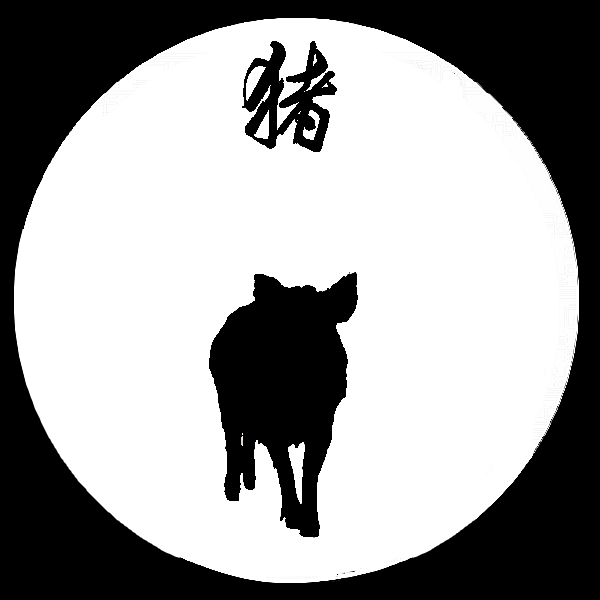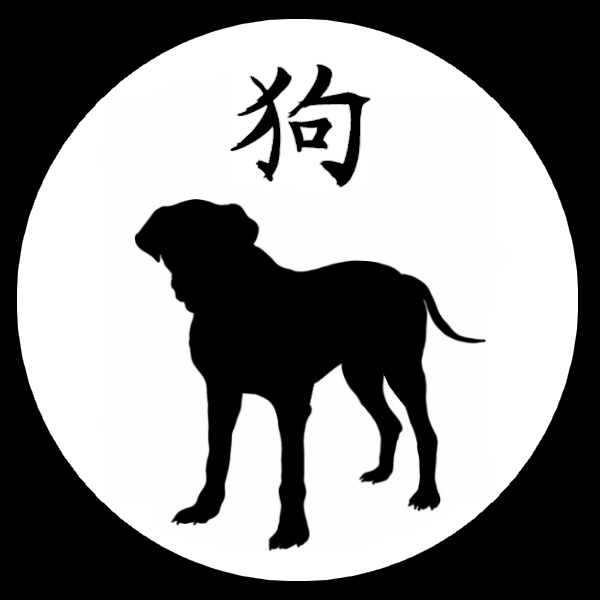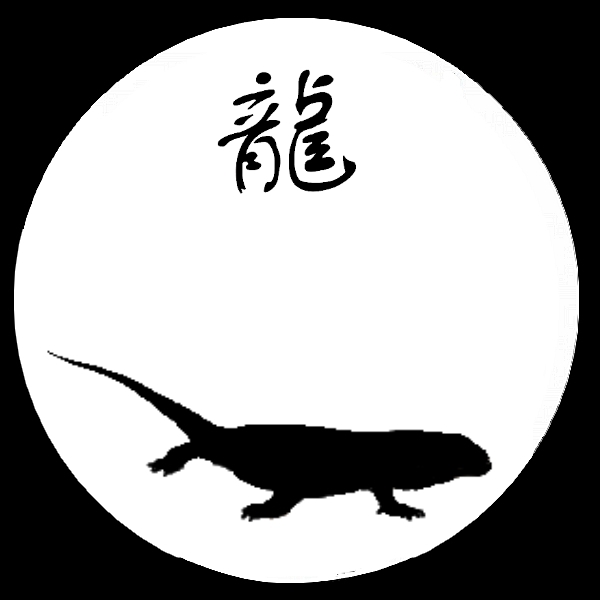|
Vietnamese Zodiac
The Vietnamese zodiac (Vietnamese language, Vietnamese: ''Mười hai con giáp'') is the traditional Vietnamese classification scheme based on the lunar calendar that assigns an animal and its reputed attributes to each year in a repeating 12-year cycle. Instead of centuries, the Viet lunar calendar is divided into 60-year cycles known as ''hồi''. Each of these consists of five 12-year animal cycles. Zodiac The Vietnamese zodiac is similar to the Chinese zodiac in its usage and arrangement of animals, but replaces the Ox (zodiac), ox with the water buffalo and the Rabbit (zodiac), rabbit with the cat. The Sino-Vietnamese vocabulary, Sino-Vietnamese name for the year of the cat/rabbit is Mão/Mẹo(卯) which is very similar in pronunciation to the native Vietnamese word Mèo for cat.https://en.wiktionary.org/wiki/M%C3%A3o See also * Vietnamese calendar * Vietnamese dragon References Bibliography * * * {{DEFAULTSORT:Vietnamese zodiac Vietnamese culture Vietnamese a ... [...More Info...] [...Related Items...] OR: [Wikipedia] [Google] [Baidu] |
Vietnamese Language
Vietnamese ( vi, tiếng Việt, links=no) is an Austroasiatic languages, Austroasiatic language originating from Vietnam where it is the national language, national and official language. Vietnamese is spoken natively by over 70 million people, several times as many as the rest of the Austroasiatic family combined. It is the native language of the Vietnamese people, Vietnamese (Kinh) people, as well as a second language, second language or First language, first language for List of ethnic groups in Vietnam, other ethnic groups in Vietnam. As a result of overseas Vietnamese, emigration, Vietnamese speakers are also found in other parts of Southeast Asia, East Asia, North America, Europe, and Australia (continent), Australia. Vietnamese has also been officially recognized as a minority language in the Czech Republic. Like many other languages in Southeast Asia and East Asia, Vietnamese is an analytic language with phonemic tone (linguistics), tone. It has head-initial directionali ... [...More Info...] [...Related Items...] OR: [Wikipedia] [Google] [Baidu] |
Snake (zodiac)
The snake ( 蛇) is the sixth of the twelve-year cycle of animals which appear in the Chinese zodiac related to the Chinese calendar. The Year of the Snake is associated with the Earthly Branch symbol 巳. According to one legend, there is a reason for the order of the animals in the cycle. The story goes that a race was held to cross a great river, and the order of the animals in the cycle was based upon their order in finishing the race. In this story, the snake compensated for not being the best swimmer by hitching a hidden ride on the Horse's hoof, and when the horse was just about to cross the finish line, jumping out, scaring the horse, and thus edging it out for sixth place. The same twelve animals are also used to symbolize the cycle of hours in the day, each being associated with a two-hour time period. The hour of the snake is 9:00 to 11:00 a.m., the time when the Sun warms up the Earth, and snakes are said to slither out of their holes. The month of the snake ... [...More Info...] [...Related Items...] OR: [Wikipedia] [Google] [Baidu] |
Vietnamese Dragon
Vietnamese dragons ( vi, Rồng; ; Sino-Vietnamese: ''Long''; ) are symbolic creatures in Vietnamese folklore and mythology. According to an ancient origin myth, the Vietnamese people are descended from a dragon and a fairy. The dragon was symbolic of bringing rain, essential for agriculture. It represents the emperor, the prosperity and power of the nation. Similar to the Chinese dragon (which has also influenced and appeared in Japan and Korea as fierce but benevolent serpentine dragons alike), the Vietnamese dragon is the symbol of yang, representing the universe, life, existence, and growth. The creation legend Lạc Long Quân, king of the dragonkind living near the Đông sea, married a fairy goddess, Âu Cơ who was the daughter of the birdkind emperor Đế Lai, descendant of Thần Nông. Âu Cơ bore 100 eggs, which hatched into 100 sons. The first-born son became the king of Lạc Việt, the first dynasty of Vietnam, and proclaimed himself Emperor Hùng Vương. ... [...More Info...] [...Related Items...] OR: [Wikipedia] [Google] [Baidu] |
Vietnamese Calendar
The Vietnamese calendar ( vi, âm lịch; Hán-Nôm: 陰曆) is a lunisolar calendar that is mostly based on the lunisolar Chinese calendar. As Vietnam's official calendar has been the Gregorian calendar since 1954, the Vietnamese calendar is used mainly to observe lunisolar holidays and commemorations, such as Tết Nguyên Đán and Tết Trung Thu. Historical developments After Vietnam regained independence following the third Chinese dominion of Viet-Nam, monarchs established their own calendars based on Chinese prototypes, and every subsequent dynasty had appointed officers to man and create the calendar to be used in the realm. According to the ''Đại Việt sử lược'' historical chronicles, the Vietnamese rulers started building astronomical/astrological facilities in the capital Thăng Long (Chữ Hán: 昇龍; i.e. modern Hanoi) as early as 1029. Beginning in 1324, the Chinese Yuan dynasty introduced the Thụ Thời () calendar to the Vietnamese Trần dynas ... [...More Info...] [...Related Items...] OR: [Wikipedia] [Google] [Baidu] |
Pig (zodiac)
The Pig ( 豬) or sometimes translated as the Boar is the twelfth of the 12-year cycle of animals which appear in Chinese zodiac, in relation to the Chinese calendar and system of horology, and paralleling the system of ten Heavenly Stems and twelve Earthly Branches. Although the term "zodiac" (etymologically referring to a " ircle oflittle animals") is used in the phrase "Chinese zodiac", there is a major difference between the Chinese usage and Western astrology: the zodiacal animals (including the zodiacal Pig) do not relate to the zodiac as the area of the sky that extends approximately 8° north or south (as measured in celestial latitude) of the ecliptic, the apparent path of the Sun, the Moon, and visible planets across the celestial sphere's constellations, over the course of the year. In Chinese astrology, "zodiacal" animals refer to fixed cycles of twelve animals. The same cycle of twelve is used for cycles of years and cycles of hours. In the case of years, the c ... [...More Info...] [...Related Items...] OR: [Wikipedia] [Google] [Baidu] |
Dog (zodiac)
The Dog ( 狗) is eleventh of the 12-year cycle of animals which appear in the Chinese zodiac related to the Chinese calendar. The Year of the Dog is associated with the Earthly Branch symbol 戌. The character 狗, also refers to the actual animal while 戌, also refers to the zodiac animal. Years and the Five Elements People born within these date ranges can be said to have been born in the "Year of the Dog", while also bearing the following elemental sign: Basic astrology elements 2018 In the sexagenary cycle, 2018 (16 February 2018–4 February 2019, and every 60-year multiple before and after), is the Celestial stem/Earthly Branch year indicated by the characters 戊戌. For the 2018 Year of the Dog, many countries and regions issued lunar new year stamps. These included countries where the holiday is traditionally observed as well as countries in the Americas, Africa, Europe and Oceania. The U.S.-China Institute at USC created a web collection of more than 10 ... [...More Info...] [...Related Items...] OR: [Wikipedia] [Google] [Baidu] |
Rooster (zodiac)
The Rooster () is the tenth of the 12-year cycle of animals which appear in the Chinese zodiac related to the Chinese calendar. The Year of the Rooster is represented by the Earthly Branch symbol 酉. In the Tibetan zodiac and the Gurung zodiac, the bird is in place of the Rooster. Years and the five elements People born within these date ranges can be said to have been born in the "Year of the Rooster", while bearing the following elemental signs: Basic astrology elements See also *Rooster *Birds in Chinese mythology *Fenghuang ''Fènghuáng'' (, ) are mythological birds found in Sinospheric mythology that reign over all other birds. The males were originally called ''fèng'' and the females ''huáng'', but such a distinction of gender is often no longer made and ... References Further reading * * * * * External links * {{Chinese Zodiac Mythological and legendary Chinese birds Chinese astrological signs Vietnamese astrological signs Legendary birds B ... [...More Info...] [...Related Items...] OR: [Wikipedia] [Google] [Baidu] |
Monkey (zodiac)
The monkey ( 猴) is the ninth of the 12-year cycle of animals which appear in the Chinese zodiac related to the Chinese calendar. The year of the monkey is associated with the Earthly Branch symbol 申. Years and the five elements People born within these date ranges can be said to have been born in the "year of the monkey", while bearing the following elemental An elemental is a mythic being that is described in occult and alchemical works from around the time of the European Renaissance, and particularly elaborated in the 16th century works of Paracelsus. According to Paracelsus and his subsequent fo ... sign: Basic astrology elements References Further reading * * * External links * {{Authority control Chinese astrological signs Vietnamese astrological signs Mythological monkeys de:Chinesische Astrologie#Zählung ab Jahresbeginn ... [...More Info...] [...Related Items...] OR: [Wikipedia] [Google] [Baidu] |
Goat (zodiac)
The Goat (, sometimes also translated Sheep or Ram) is the eighth of the 12-year cycle of animals which appear in the Chinese zodiac related to the Chinese calendar. This zodiacal sign is oftenWen Huang"Year of the Sheep, Goat or Ram?"''Chicago Tribune,'' January 31, 2003. Retrieved 8 February 2015. referred to as the "Ram" or "Sheep" sign, since the Chinese word ''yáng'' is more accurately translated as Caprinae, a taxonomic subfamily that includes both goats and sheep, but contrasts with other animal subfamily types such as Bovinae, Antilopinae, and other taxonomic considerations which may be encountered in the case of the larger family of Bovidae in Chinese mythology, which also includes the Ox (zodiac). The Year of the Goat is associated with the 8th Earthly Branch symbol, 未 (''wèi''). Goat or Sheep The Chinese word ''yáng'' refers to both goats and sheep, whereas the terms ''shānyáng'' () and ''miányáng'' () refer exclusively to goats and sheep, respectively. [...More Info...] [...Related Items...] OR: [Wikipedia] [Google] [Baidu] |
Horse (zodiac)
The Horse ( ⾺) is the seventh of the 12-year cycle of animals which appear in the Chinese zodiac related to the Chinese calendar. There is a long tradition of the Horse in Chinese mythology. Certain characteristics of the Horse nature are supposed to be typical of or to be associated with either a year of the Horse and its events, or in regard to the personality of someone born in such a year. Horse aspects can also enter by other chronomantic factors or measures, such as hourly. The year of the horse is associated with the Earthly Branch symbol 午. History The lunar calendar paved the sequence of the Chinese zodiac animals. This calendar can be traced back to the 14th century B.C. Myths say that Emperor Huangdi, the first Chinese emperor, in 2637 B.C. invented the Chinese lunar calendar, which follows the cycles of the moon. In a folklore story that explains the origins of the cycle, the animals hold a race to determine their order. The custom of pairing an animal wit ... [...More Info...] [...Related Items...] OR: [Wikipedia] [Google] [Baidu] |
Dragon (zodiac)
The Dragon, also known as Loong, () is the fifth of the 12-year cycle of animals which appear in the Chinese zodiac related to the Chinese calendar. The Year of the Dragon is associated with the Earthly Branch symbol 辰, pronounced ''chen''. It has been proposed by one academic researcher that the Earthly Branch character may have been associated with scorpions; it may have symbolized the star Antares. In the Buddhist calendar used in Thailand, Cambodia, Laos, Myanmar, and Sri Lanka, the Dragon is replaced by the nāga. In the Gurung zodiac, the Dragon is replaced by the eagle. In Old Turkic calendar it is replaced by the fish or crocodile. Early Persian translations of the medieval period change to dragon to a sea serpent although in current times is generally refer to as whale. During the Cultural Revolution, giant panda was situated in the place of the dragon although this didn't last long. Years and the Five Elements People born within these date ranges can be said to ha ... [...More Info...] [...Related Items...] OR: [Wikipedia] [Google] [Baidu] |
Animal
Animals are multicellular, eukaryotic organisms in the Kingdom (biology), biological kingdom Animalia. With few exceptions, animals Heterotroph, consume organic material, Cellular respiration#Aerobic respiration, breathe oxygen, are Motility, able to move, can Sexual reproduction, reproduce sexually, and go through an ontogenetic stage in which their body consists of a hollow sphere of Cell (biology), cells, the blastula, during Embryogenesis, embryonic development. Over 1.5 million Extant taxon, living animal species have been Species description, described—of which around 1 million are Insecta, insects—but it has been estimated there are over 7 million animal species in total. Animals range in length from to . They have Ecology, complex interactions with each other and their environments, forming intricate food webs. The scientific study of animals is known as zoology. Most living animal species are in Bilateria, a clade whose members have a Symmetry in biology#Bilate ... [...More Info...] [...Related Items...] OR: [Wikipedia] [Google] [Baidu] |










